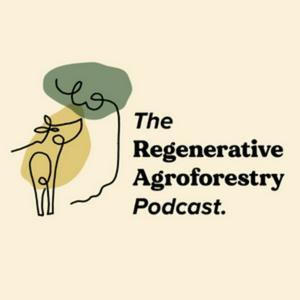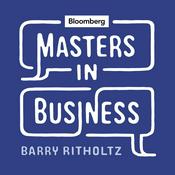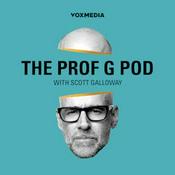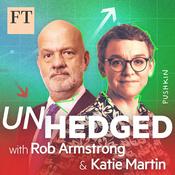The Regenerative Agroforestry Podcast

57 episodios

#55 Economic modelling and agroforestry design with Harry Greene
04/9/2023 | 1 h 18 min
Propagate is a leader in the agroforestry space, specialising in project development and planting agroforestry systems at scale. It's a huge pleasure to chat with Harry, co-founder and Chief Research Officer of the US-based company. Tune in as we geek out on agroforestry economics, economic modelling, design implications and financing options. We delve into questions such as: How do you business plan agroforestry systems? How do we find a balance between economic performance and ecosystem services? And much more!• RESOURCEShttps://www.propagateag.com/• GET IN TOUCH www.regenerativeagroforestry.org• SUPPORT US www.gumroad.com/regenagroforestry• FOLLOW US on Twitter, Facebook, LinkedIn and Instagram• FUNDING FOR EUROPEAN PROJECTS https://explore.ecosia.org/regenerative-agriculture Hosted on Acast. See acast.com/privacy for more information.

#54 The importance of peer to peer learning to activate local agroforestry dynamics with Claire Lemarié
02/3/2023 | 58 min
In this episode I discuss with Claire Lemarié her experience working with farmers in the Pays de la Loire region in France, where she is a technical adviser for the chamber of agriculture. She has precious insights into the management of mature hedges, as this region still has a significant amount of bocage: a traditional french hedge layout. In this interview we gain an understanding of why effective information sharing between farmers is crucial to creating innovative agroforestry systems and how she enables peer to peer exchange through the 'Club des Agroforestiers'.• RESOURCEShttps://www.linkedin.com/in/claire-lemari%C3%A9-34b667155/?originalSubdomain=frYoutube video Chambre d'agriculture de la Loire• GET IN TOUCH www.regenerativeagroforestry.org• SUPPORT US www.gumroad.com/regenagroforestry• FOLLOW US on Twitter, Facebook, LinkedIn and Instagram• FUNDING FOR EUROPEAN PROJECTS https://explore.ecosia.org/regenerative-agriculture Hosted on Acast. See acast.com/privacy for more information.

#53 Practicalities of integrating coppicing into your farm with Mark Krawczyk
27/12/2022 | 1 h 40 min
Coppicing is an ancient and modern tree management system. Coppicing is known for its multi-functionality: capable of producing biomass, animal forage, firewood and much more. Today we interview Mark Krawczyk, practitioner, consultant and author of 'Coppice Agroforestry'. In this interview we tackle some of the practical challenges of coppicing, to better understand the economic potential of this technique. Mark demonstrates a variety of nuances and compromises, showing us the versatility as well as the key challenges of this technique. TABLE OF CONTENTS00:02:22 Introduction00:13:19 What are the key concepts of coppicing00:27:50 What impact on tree health? 00:39:12 What prospects for mechanising management? 00:51:44 What uses for coppiced wood? 01:17:42 What effect of coppicing on surrounding plants? 01:22:24 Productivity of coppice stands01:29:14 In relation to soil types• RESOURCEShttps://www.keylinevermont.com/http://www.coppiceagroforestry.com/https://regenerativeskills.com/mark-krawczyk-on-coppice-agroforestry-and-woodland-management-part-1/• GET IN TOUCH www.regenerativeagroforestry.org• SUPPORT US www.gumroad.com/regenagroforestry• FOLLOW US on Twitter, Facebook, LinkedIn and Instagram• FUNDING FOR EUROPEAN PROJECTS https://explore.ecosia.org/regenerative-agriculture Hosted on Acast. See acast.com/privacy for more information.

#52 Agroforestry at the landscape scale to transform ecological function and boost productivity with Bruce Maynard
30/11/2022 | 1 h 22 min
Bruce Maynard and his family are livestock managers and row crop farmers in New South Wales in Austalia. Over his carreer, he has succesfully integrated shrubs and trees to their livestock and row crop operation. He has been able to double his stocking rate through increasing the ecological function of the farm. We dig deep into the design of his tree systems and how it has evloved over the years. We unpack in detail how he has been able to transform his landscape on such a large scale and how this was possible from a business perspective. TABLE OF CONTENTS00:01:21 Bruce's story and description of the farm00:10:06 No-kill cropping00:15:05 Complexifying the landscape00:22:57 Design over time00:30:19 Taking machinery into account00:37:57 Specifics of saltbush00:42:30 Recovery times between bush and pasture00:54:06 Microclimatic benefits00:57:30 Planting trees at scale and its logistics01:10:30 Management of trees/shrubs01:16:00 Business strategy and cashflow01:19:32 Ressources to go further• RESOURCEShttp://selfherding.com/index.htmlhttps://stressfreestockmanship.com.au/https://www.youtube.com/watch?v=fHzo0fDBZs0• GET IN TOUCH www.regenerativeagroforestry.org• SUPPORT US www.gumroad.com/regenagroforestry• FOLLOW US on Twitter, Facebook, LinkedIn and Instagram• FUNDING FOR EUROPEAN PROJECTS https://explore.ecosia.org/regenerative-agriculture Hosted on Acast. See acast.com/privacy for more information.

#51 Feedback from 30 years of research on alley cropping systems with Christian Dupraz
16/11/2022 | 1 h 5 min
What have we learnt from 30 years at one of the most prominent agroforestry research sites in the world? In collaboration with AGROMIX, We are excited to present an interview with Christian Dupraz, a leading agroforestry researcher from INRAE Montpellier. This is one of our rare 'in person' interviews where we discussed years of findings under the alley cropping walnut trees of the Domaine de Restinclières. We analysed many technical details such as tree - crop competition, tree pruning and adapted tree species. We also discussed socio-economic aspects such as the relationship with the local farmers and the reason why alley cropping systems have not yet been scaled. Enjoy!TABLE OF CONTENTS02:25 Introduction11:12 Experiment today13:38 Growth rate of trees17:43 Impact of AF on the quality of the wood20:13 Considerations to produce a straight trunk00:22 Impact on arable crop 00:26:45 Competition between crop and tree00:30:18 Effect of pollarding on tree quality00:33:56 How do the trees effect the row crop farmer? 00:38:08 How would tree crops fare in alley cropping? 00:39:32 Increase in bat population and its benefits00:44:36 Main mistakes 00:48:05 What context for alley cropping to be successful? 00:56:30 Why do we not see more alley cropping?• RESOURCEShttps://www.researchgate.net/profile/Christian-Dupraz-3https://agromixproject.eu/• GET IN TOUCH www.regenerativeagroforestry.org• SUPPORT US www.gumroad.com/regenagroforestry• FOLLOW US on Twitter, Facebook, LinkedIn and Instagram• FUNDING FOR EUROPEAN PROJECTS https://explore.ecosia.org/regenerative-agriculture• FIND OUT MORE ABOUT OUR COLLABORATION WITH AGROMIX HERE Hosted on Acast. See acast.com/privacy for more information.
Más podcasts de Economía y empresa
Podcasts a la moda de Economía y empresa
Acerca de The Regenerative Agroforestry Podcast
Escucha The Regenerative Agroforestry Podcast, Hágale como quiera y muchos más podcasts de todo el mundo con la aplicación de radio.net

Descarga la app gratuita: radio.net
- Añadir radios y podcasts a favoritos
- Transmisión por Wi-Fi y Bluetooth
- Carplay & Android Auto compatible
- Muchas otras funciones de la app
Descarga la app gratuita: radio.net
- Añadir radios y podcasts a favoritos
- Transmisión por Wi-Fi y Bluetooth
- Carplay & Android Auto compatible
- Muchas otras funciones de la app


The Regenerative Agroforestry Podcast
Descarga la app,
Escucha.







































